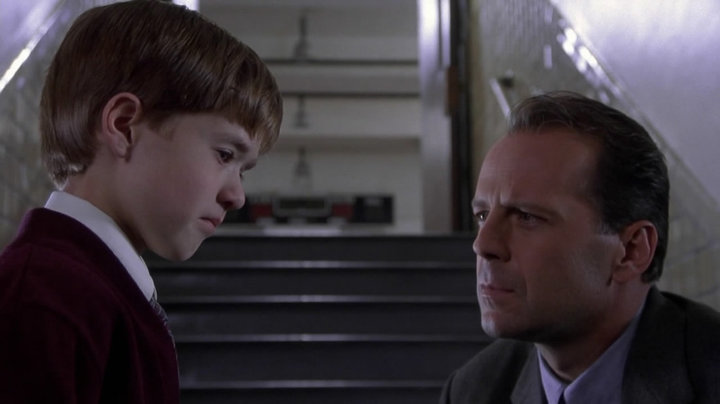Plot twists in a movie are great. There are few greater joys in a film than that moment when you are truly, satisfyingly surprised by a twist you never saw coming, but in retrospect realize was inevitable.
But sometimes… there’s too much of a good thing.

We’ve all seen a movie like this. There are so many plot twists and reversals that after awhile, you’re not so much surprised as you are confused, and not so much on-the-edge-of-your-seat as you are put at a distance. The spy wasn’t just a spy, she was a double agent! Actually, she was a triple agent! Actually, she’s been dead the whole time! Actually, the whole movie was a dream! It’s not fun, it’s annoying.
I don’t ever like to name and shame movies on this blog, but I will say that I saw a movie in theaters recently that had so many never-saw-’em-coming twists and turns that by the end of the film, there was nothing left in the story to believe in or care about. Nothing could be trusted, nothing was real. Every aspect of that story I’d invested in had been a lie, from the big, important themes down to the smallest, stupidest facts. It made me feel cheated and like I’d wasted my time.
Here are two ways to avoid that:
-
Keep your big reversals to the ends of acts. End of Act 1, midpoint (end of Act 2a), end of Act 2, and probably one more at the end of the movie, depending on what kind of movie it is. That’s it. If you have giant twists happening in every scene, the audience will get confused and exhausted. (If you’re writing for TV, then it’s even more straightforward because it is probably unmistakable where your acts end.)
If you must do the thing where there’s a twist at the end of the movie and then there’s a second twist the audience didn’t see coming because they were still reeling from the first, I would not deprive you of that. Those can be fun. BUT YOU CAN ONLY HAVE ONE EXTRA TWIST. Don’t then have a third twist and a fourth, unless you’re writing a parody because that might actually be really funny.
This is not one of those things where one twist is great so fourteen must be amazing. More is not better. Better is better.
Also, when I say a reversal at the end of each act, I don’t mean that each of those reversals is an M. Night Shyamalan style shocker. They can’t all have been dead the whole time. When I say a reversal or a twist, I just mean something that changes the audience’s understanding of the situation and spins the story in a new direction.
I think sometimes writers are afraid to put reversals at the end of an act because that’s where the audience expects it. But it’s actually satisfying when a story delivers what you expect! The key is to deliver it in a way that’s unexpected. So, yes, do put a big twist at the end of the act (or a small reversal if it’s a quiet, contemplative story), just don’t make it the first, most obvious idea that popped in your head.
-
Have a few things in your script that you keep sacred and do not let any reversals undo those things. A classic example of this would be a primary relationship if your story has one (and it almost certainly does). It could be your protagonist’s love for her daughter, or it could be a romantic relationship you want to hold sacred in your story. You may want to make that bond untouchable by plot twists so the audience has something to hold onto throughout all the twists and turns of the story.
Or, if you do want your primary relationship to be undone by a twist because that’s what your whole movie is about (you lovable cynic), then have something else be your Untouchable Truth — maybe it’s your protagonist’s loyalty to his country. Maybe it’s your mentor’s inherent goodness. Maybe it’s the way your magic system works. Whatever it is, have a few important things in your film that are core to what the movie is about and make sure those things are never upended in a twist.
In fact, if anything, any twists should cement those things. Underline, not strikethrough.
What else am I missing? What makes for an especially good or bad twist? How much is too much?
***
You can now like this page on Facebook! Click the “Following” dropdown and select “See First” and “Notifications On” to get notified of new posts.